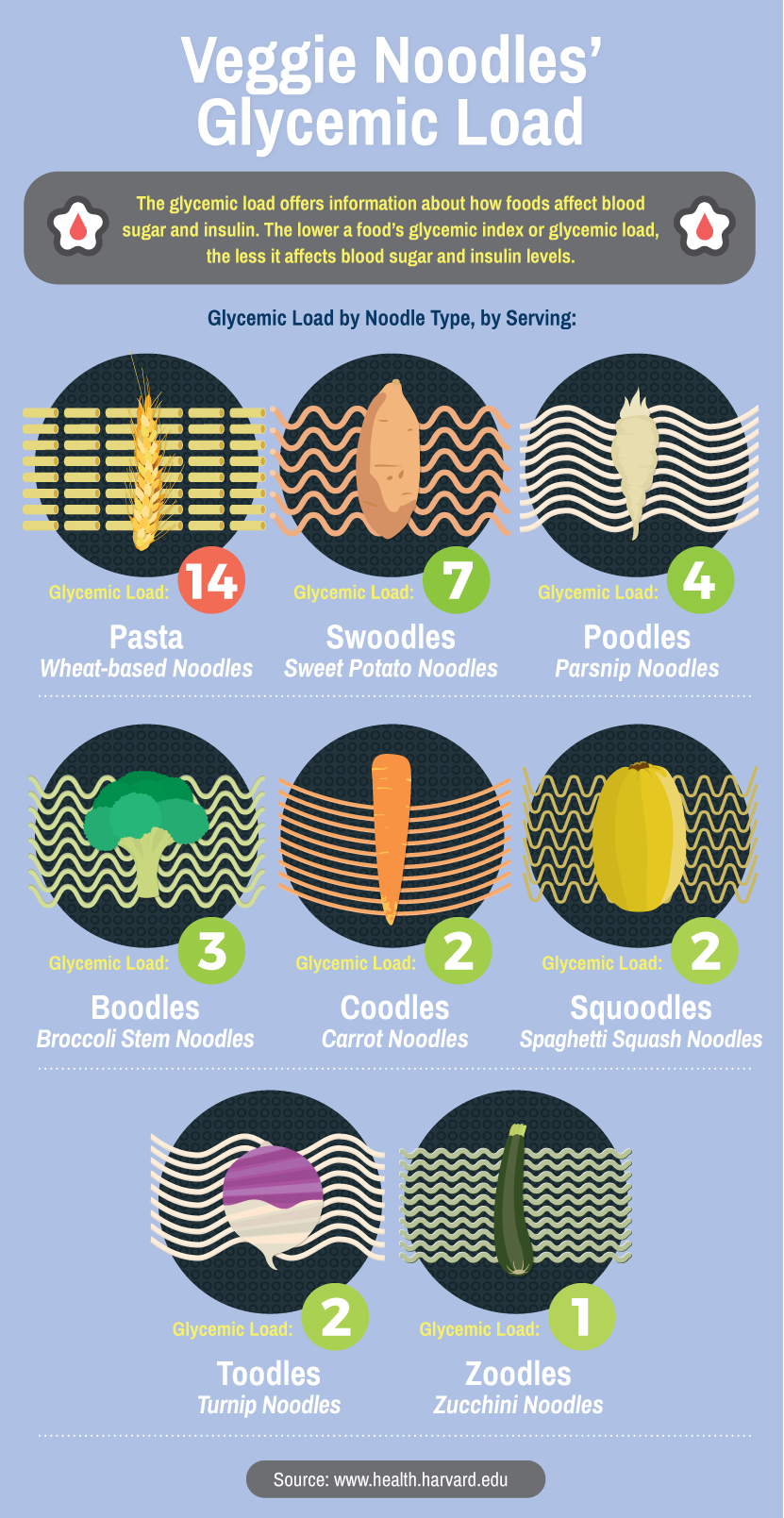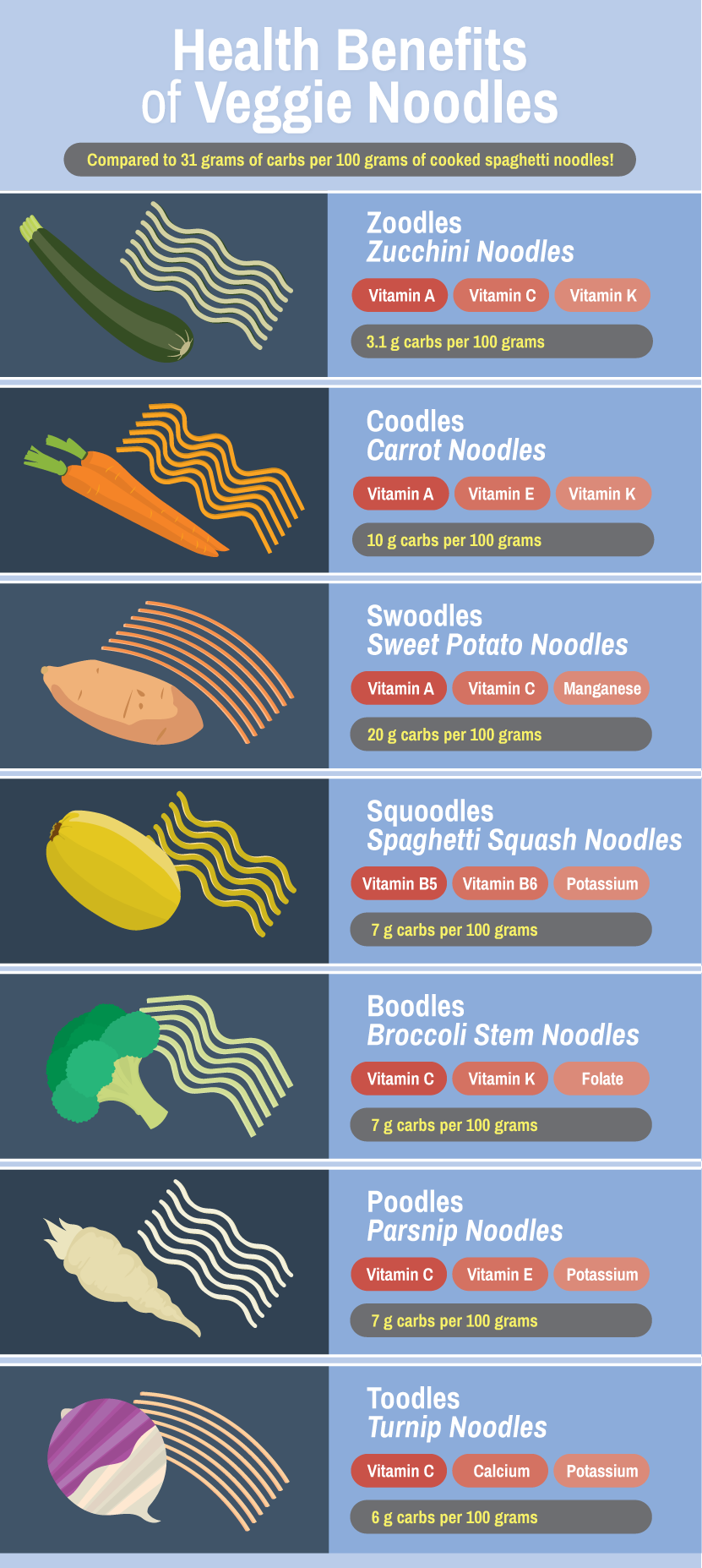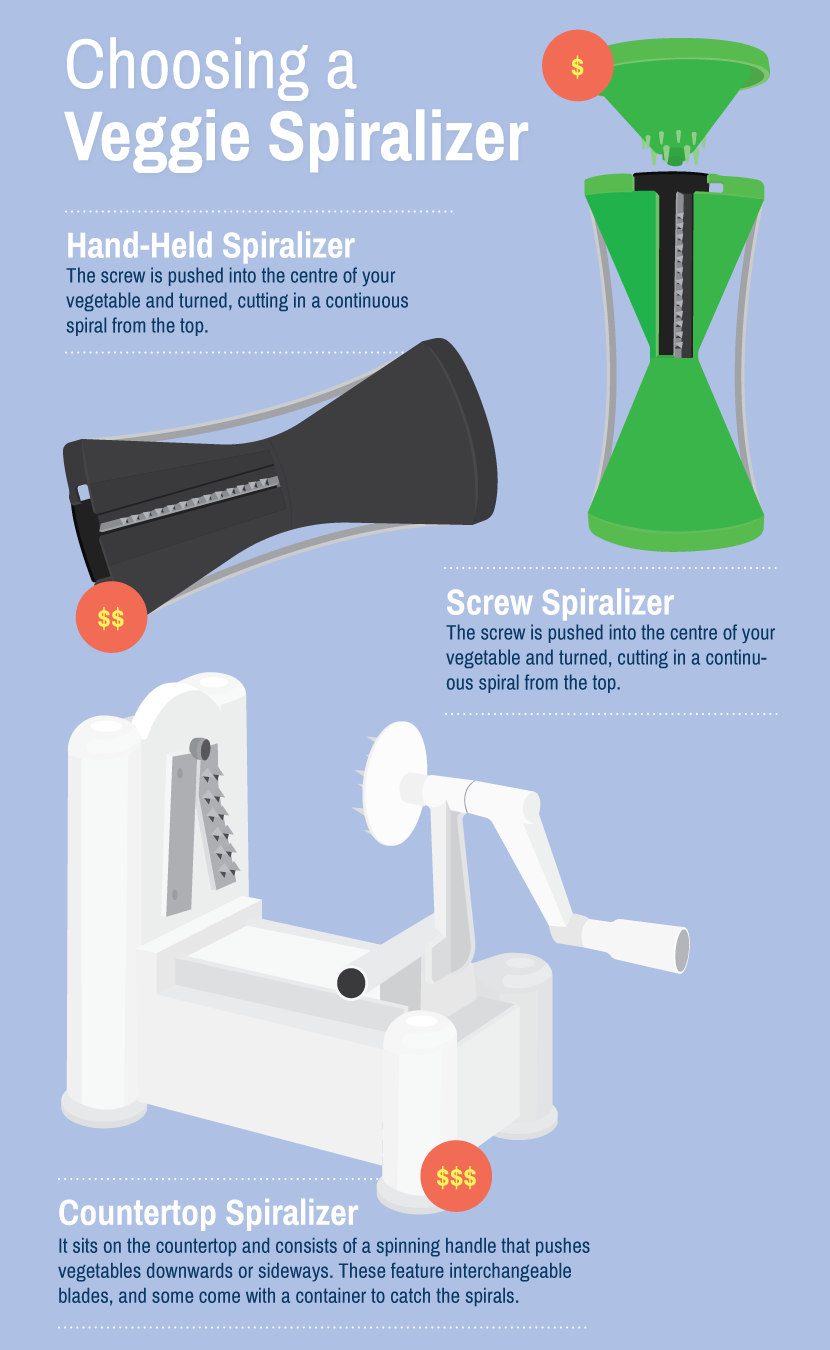Veggie Noodles
The Pasta Lover’s Healthy Alternative
If you asked me what food I’d choose to eat forever if I could only pick one thing, I’d say pasta, hands down.
Whether it’s delicious spaghetti Bolognese or melty cheese tortellini, I’m all over it. As a kid, I used to get upset
at the sacrilegious use of my beloved noodle in so-called “pasta art” – those were bowtie butterflies I could have eaten!
Today, I try to be a little more cautious about my carby obsession, but that usually tends to amount to adding more veggies to my pasta sauce.
But then a beautiful thing happened. The world invented the slicer spiral vegetable slicer, a gadget for turning everyday veggies into veggie noodles.
What are the Best Veggies for Spiralling?
You can transform all sorts of vegetables into noodles, but the best candidates are those that are firm (not floppy) and long or that can be
cut long (if you want long spaghetti that you can easily spiral). One of the best aspects of veggie noodles is their spectacular
names. Here are some of the best vegetables for spiralling:
- Zoodles (zucchini noodles)
- Coodles (carrot noodles)
- Swoodles (sweet potato noodles)
- Squoodles (squash noodles)
- Boodles (broccoli stem noodles)
- Poodles (parsnip noodles)
- Toodles (turnip noodles)

Health Benefits of Veggie Noodles
There’s nothing wrong with a balanced diet that includes carbohydrates like pasta, but between the bread,
pasta, potatoes, and yes, even yams, sometimes we can overdo it a bit on the glycemic load.
Finding healthy alternatives to replace some of your carb-heavy meals is a good way to modify your diet
realistically without the typical yoyo effects of extreme fad diets.
Veggie noodles are a good gluten-free option for cutting down on the carbs found in pasta, but they also offer a more complete set of
nutrients, like vitamin A (good for vision and the immune and inflammatory systems), C (an antioxidant that is good for skin and bones),
E (good for protecting against heart disease), K (good for blood and bone health), and fiber (good for digestion and cardiovascular health).
None of these nutrients can be found in pasta noodles.

Which Spiral Vegetable Cutter Should I Buy?
After a ton of research and some bizarre finds (like the “Fresh Express Salad Shooter,” which seems to be a potato gun for cucumbers),
I put together a handy guide for how to pick the perfect spiral vegetable slicer.
Basically, there are three different types of vegetable spiralizers.
Screw Spiralizer
Cost: $
The screw spiralizer is the smallest of the three types of spiralizers. It looks like a short screw with a long blade-edged handle.
You push the screw into the center of your vegetable and turn it, cutting in a continuous spiral from the top.
Pros: It’s cheap, it doesn’t take up a lot of space, and you can spiral the entire vegetable.
Cons: It’s not very durable, you can’t adjust the spiral size or shape, and it has a harder time cutting through firmer veggies.
Hand-held Spiralizer
Cost: $$
The
The hand-held spiralizer is a step up from the screw. It has a conical chamber with a blade on the side. You push the
vegetables into it and turned them by hand; spirals come out the side.
Pros: It’s affordable, it doesn’t take up a lot of space, and some models come with interchangeable blades.
Cons: It can be hard to use with firmer veggies, you have to cut veggies to the right size and shape, and you’re left with quite a big chunk of vegetable that can’t be cut.
Countertop Spiralizer
Cost: $$$
The countertop spiralizer is the largest and most sophisticated of the three types. It sits on the countertop and consists of a
spinning handle that pushes vegetables downwards or sideways and interchangeable blades. Some come with a container to catch the spirals.
Pros: It’s easy to use and durable, and the adjustable blades allow you to choose exactly what kind of cut you want.
Cons: Some models are quite expensive, and it takes up significantly more space.

How to Cook Spiralled Veggies
Spiralled veggies are easy and fast to cook, but there are some tips you should follow to achieve the best results.
Make sure you pat wetter veggies dry before cooking. Veggies like zucchini are 90% water, so you want to remove most of that water
before cooking. All veggie noodles can be boiled, but cooking times vary depending on whether you’re cooking softer or firmer vegetables.
Zucchini takes 1–2 minutes, while sweet potatoes take 4–5. Sometimes you may not even need to cook your spiralized veggies. Raw veggies
have an interesting texture, and you’ll reap increased health benefits by maintaining all the nutrients.
When it comes to sauces, the less water the better. Reduce your tomato-based sauce as much as possible or choose thicker cream-based
sauces to pair with your noodles. Richer alfredo and rosé sauces pair best with lighter veggies, like zucchini, while sauces like arrabbiata
with a tomato base go best with heartier root vegetables.
Try These Mouth-Watering Sauces:
Tomato, Chicken and Artichoke Sauce (goes best with sweet potato noodles)
Avocado Kale Pesto Avocado kale pesto (goes best with zucchini noodles)
Sesame Ginger Dressing (goes best with raw broccoli stem noodles)
Veggie noodles are a healthy alternative to pasta noodles that, unlike many healthier choices, are actually faster to make and no more expensive
than buying a box of spaghetti. They work brilliantly with all types of pasta sauces, and they make a great twist on noodle salads. While some new-fangled
kitchen gadgets have come and gone in a flash (who still uses their egg slicer??), veggie spiral slicers might be here to stay.
Embed the article on your site

